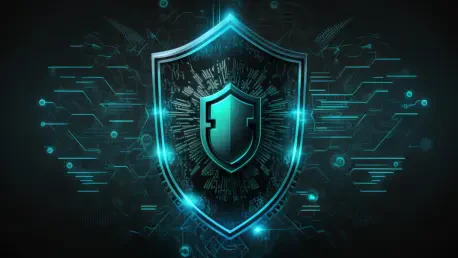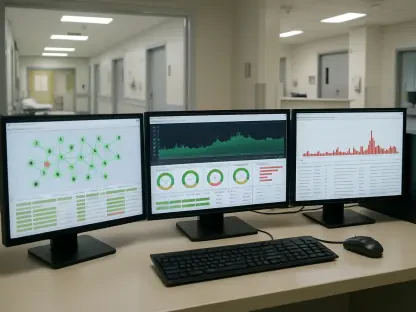In a world where technology forms the backbone of countless industries, the omnipresent threat of cyberattacks has necessitated a reimagining of traditional security measures. Enter Zero Trust Architecture, a paradigm shift in cybersecurity that fundamentally challenges the way organizations approach network security. Unlike classical models, which rely on the sanctity of network perimeters, zero trust assumes that threats may lurk within as well as outside. Therefore, it enforces stringent verification before granting any access, based on the mantra, “never trust, always verify.” Despite its potential, the adoption of zero trust architectures has exposed several significant gaps that hinder their effectiveness, especially as they contend with increasingly sophisticated cyber threats.
Challenges and Realities of Zero Trust Implementation
Unmasking the Illusion of Security
Zero trust architecture, once envisioned as the ultimate safeguard against credential-based attacks, now appears more fraught with vulnerabilities than anticipated. Organizations continue to confront breaches, starkly revealing the shortcomings and misplaced confidence in zero trust applications. The perpetrators of these breaches skillfully manipulate security gaps and exploit identity systems, undermining the very framework intended to prevent their access. Unfortunately, this has led to a lingering question within the cybersecurity community: is the current model of zero trust achieving the progress it was set out to?
The idea behind zero trust is straightforward: eliminate implicit trust and instead verify every access decision dynamically. However, this becomes complicated in practice, primarily due to the complex interplay of devices, networks, and user behaviors. Cyber adversaries have adeptly taken advantage of this complexity. By leveraging stolen credentials, they masquerade as legitimate users and obtain unauthorized access to critical systems. A telling indicator of this pattern is seen in the reports from major data security investigations, which consistently show a significant percentage of breaches stemming from credential theft. Thus, the promise of zero trust remains partially unfulfilled, urging a reevaluation of how it addresses real-world threats.
Flaws and Misalignments in Execution
The disappointing results of zero trust implementation can often be traced back to its over-reliance on intricate software and technological fixes without adequately addressing the fundamental problem of identity management. The challenge, as pointed out by cybersecurity experts, lies in how zero trust systems create a new set of vulnerabilities instead of neutralizing the existing ones. Rather than eliminating reliance on credentials, these systems frequently shift the burden, inadvertently generating opportunities for threat actors to exploit overlooked or poorly understood weaknesses.
This misalignment between theory and execution is exacerbated by an overemphasis on technology at the expense of strategic governance. While considerable investments have been made in developing zero trust solutions, they often cater to endpoint-centric approaches. Such solutions may overlook the holistic nature of effective cybersecurity, which includes comprehensive governance, robust session management, and adaptive threat intelligence. Consequently, the current framework may become brittle, prone to failure, and easy prey for adversaries who can manipulate its complex trust-based interactions. Thus, advancing zero trust requires addressing these critical misalignments by emphasizing resilience along with technological advancements.
Emerging Trends, Insights, and Unifying Narratives
Evolution of Cyber Threats and Security Responses
As threat actors evolve, embracing more refined strategies and tools, cyber defenses must adapt in tandem. Today’s threat landscape is marked by an increasing prevalence of identity-driven attacks, as seen in globally impactful breaches that have become case studies in the cybersecurity domain. Attackers adeptly employ techniques such as malware infiltration and social engineering to obtain and exploit credentials, bypassing security perimeters with relative ease. This trend has underscored the necessity of rethinking identity as a pivotal element rather than an ancillary facet of cybersecurity.
A nuanced understanding of user behavior, contextual signals, and adaptive authentication may hold the key to evolving zero trust strategies effectively. To remain relevant, zero trust systems must transcend traditional security postures, incorporating intelligent solutions that anticipate and adapt to threat actors’ evolving tactics. These systems need to seamlessly integrate trust checks across a wide range of interaction points, informed by behavior analysis and user profiling. In this way, security strategies become not only reactive but predictive, enhancing their efficacy in neutralizing diverse attacks.
Infrastructure-Level Resilience and Systemic Equity
There is a growing consensus that refining architecture-level defenses could significantly enhance zero trust outcomes. Shifting the focus to infrastructure resilience implies rethinking how systems manage and distribute trust across their structures. Instead of concentrating solely on endpoints or generating exhaustive surveillance, security frameworks should aim for a distributed trust model. This approach can bolster defenses by embedding multiple layers of verification and trust checks across different components, such as device health indicators and transactional monitoring.
Furthermore, a critical aspect emerging from discussions on zero trust is the need for systemic equity. Ensuring that security measures do not disproportionately burden less-resourced entities or drive them towards insecure shadow IT practices remains a sensitive issue. For zero trust frameworks to truly succeed, they must balance dynamic security controls with the practical realities of diverse operational environments. Therefore, shaping future-ready zero trust architectures demands an equitable approach that alleviates resource disparities and encourages widespread adoption through accessible solutions.
Charting the Future of Zero Trust Architecture
In today’s world, where technology is integral to numerous industries, the ever-present risk of cyberattacks has prompted a reevaluation of conventional security measures. This has led to the emergence of Zero Trust Architecture, a groundbreaking shift in cybersecurity thinking. Unlike traditional security models, which depend heavily on the integrity of network perimeters, zero trust operates on the understanding that threats can arise both internally and externally. As a result, it emphasizes rigorous authentication for access, following the guiding principle of “never trust, always verify.”
Despite its innovative approach, the implementation of zero trust architectures has revealed several critical shortcomings that limit their overall effectiveness. These limitations are evident as these systems continually face increasingly advanced cyber threats. As cybercriminals develop more sophisticated techniques, zero trust frameworks must adapt and evolve to remain effective. The challenges include ensuring seamless integration with existing systems, managing the complexity of implementation, and maintaining user experience without compromising security.
To address these issues, organizations must commit to ongoing updates and education regarding cybersecurity strategies. Additionally, fostering collaboration between technology developers and cybersecurity experts will be crucial in overcoming the current obstacles and ensuring that zero trust models can withstand the dynamic cybersecurity landscape.









